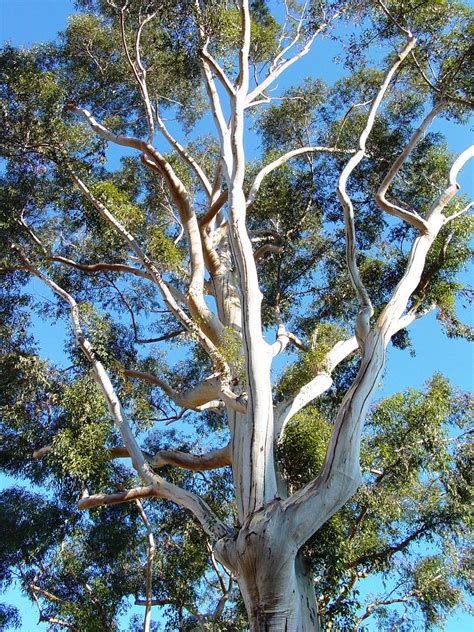The scent of eucalyptus wafts through the air, a familiar and distinctive aroma that is synonymous with the sun-kissed landscapes of California. These towering trees, with their silvery-green leaves and rugged, gnarled trunks, have become an integral part of the state’s ecosystem and cultural identity. But how did these Australian natives come to thrive in the Golden State, and what impact have they had on the environment and local communities?
To understand the story of eucalyptus trees in California, it’s necessary to delve into the state’s history of agriculture and landscaping. In the late 19th century, Californian farmers and gardeners began to import eucalyptus seeds from Australia, drawn by the tree’s rapid growth rate, hardiness, and perceived benefits for the soil and climate. The most popular species, Eucalyptus globulus, was touted as a miracle tree, capable of drying out wetlands, preventing soil erosion, and even curing respiratory ailments. As a result, eucalyptus plantations sprouted up across the state, particularly in the coastal regions, where the mild climate and ample moisture created ideal conditions for growth.
One of the primary drivers behind the widespread adoption of eucalyptus trees in California was the railroad industry. In the early 20th century, railroad companies began to plant eucalyptus trees alongside their tracks, using the wood for railroad ties and the leaves for medicinal purposes. This large-scale planting effort helped to establish eucalyptus as a ubiquitous feature of the California landscape, with the trees soon becoming a common sight in urban parks, gardens, and rural areas.
However, as the years passed, the drawbacks of eucalyptus cultivation began to become apparent. The trees’ aggressive growth habits and dense canopies led to the suppression of native vegetation, altering the local ecosystem and displacing indigenous species. The eucalyptus oil, while fragrant and useful for perfumes and medicines, also proved to be highly flammable, contributing to the risk of wildfires in California’s dry summer months. Furthermore, the trees’ shallow root systems and high water requirements made them prone to toppling in strong winds, causing damage to property and infrastructure.
Despite these challenges, eucalyptus trees remain a beloved and iconic part of California’s cultural heritage. The trees’ distinctive scent and striking appearance have inspired countless artists, writers, and musicians, from the impressionist painters who captured their majestic forms on canvas to the folk singers who wove their symbolism into song lyrics. In many California towns, eucalyptus trees are cherished as living landmarks, their twisted trunks and branches telling stories of the state’s history, climate, and people.
For example, the city of Santa Cruz, nestled in the heart of the Central Coast, is home to a stunning eucalyptus forest, where the trees’ towering canopies and rustling leaves create a soothing, ethereal atmosphere. Visitors can wander through the forest’s winding trails, taking in the intoxicating aroma and marveling at the trees’ sheer scale and beauty. Similarly, in the San Francisco Bay Area, the eucalyptus trees that line the scenic Highway 1 have become a popular tourist attraction, offering breathtaking views of the Pacific Ocean and the surrounding landscape.
While eucalyptus trees have had a profound impact on California's environment and culture, it's essential to acknowledge the trees' limitations and potential drawbacks. As the state continues to grapple with issues like drought, wildfires, and ecosystem preservation, it's crucial to adopt a nuanced and balanced approach to eucalyptus cultivation, one that recognizes the trees' benefits while also addressing their negative consequences.
In recent years, California has taken steps to mitigate the risks associated with eucalyptus trees, from implementing more sustainable forestry practices to promoting the use of native species in landscaping and reforestation efforts. As the state looks to the future, it’s likely that eucalyptus trees will continue to play a significant role in California’s ecosystem and cultural identity, albeit one that is more mindful of the trees’ potential impacts and more invested in preserving the delicate balance of the state’s unique and fragile environment.
Managing Eucalyptus Trees in California: A Step-by-Step Guide
- Assess the tree's condition and potential risks, taking into account factors like size, location, and surrounding vegetation.
- Develop a management plan that balances the tree's benefits with its potential drawbacks, considering options like pruning, thinning, or removal.
- Implement sustainable forestry practices, such as selective harvesting and reforestation, to maintain the health and diversity of the surrounding ecosystem.
- Monitor the tree's impact on local wildlife and vegetation, taking steps to mitigate any negative effects and promote biodiversity.
- Engage with local communities and stakeholders to raise awareness about the importance of responsible eucalyptus management and the need for a balanced approach to tree cultivation.
As California continues to evolve and grow, it’s essential to recognize the complex and multifaceted role that eucalyptus trees play in the state’s ecosystem and cultural heritage. By adopting a comprehensive and nuanced approach to eucalyptus management, one that acknowledges both the trees’ benefits and drawbacks, Californians can work towards creating a more sustainable, resilient, and environmentally conscious future for generations to come.
What are the main benefits of eucalyptus trees in California?
+Eucalyptus trees provide numerous benefits, including shade, fragrance, and medicinal properties. They also play a crucial role in preventing soil erosion and supporting local wildlife.
What are the potential drawbacks of eucalyptus trees in California?
+Eucalyptus trees can be highly flammable, contributing to the risk of wildfires in California’s dry summer months. They also require significant amounts of water, which can strain local resources, and their aggressive growth habits can lead to the suppression of native vegetation.
How can Californians promote sustainable eucalyptus management?
+Californians can promote sustainable eucalyptus management by adopting a balanced approach to tree cultivation, one that recognizes both the benefits and drawbacks of eucalyptus trees. This can involve implementing sustainable forestry practices, such as selective harvesting and reforestation, and engaging with local communities to raise awareness about the importance of responsible eucalyptus management.



